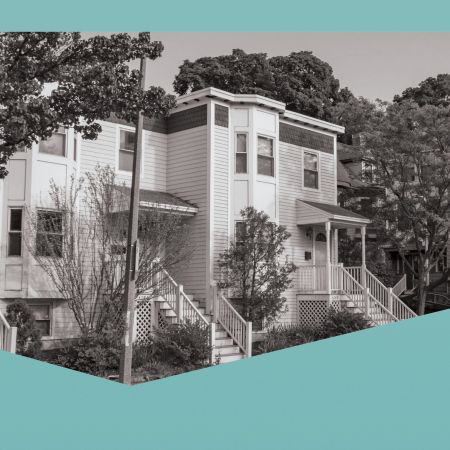A Primer on Children’s Savings Accounts: Their Promise and Limitations

By Kelly Harrington
August 9, 2023
What is a CSA?
Children’s Savings Account (CSA) programs provide children with a savings or investment account and usually pair this with some modest cash contributions into the account. Most programs are designed to promote college attendance. They are often touted as a tool with potential to narrow racial wealth gaps, though many existing CSA programs don’t name that as a primary goal and aren’t designed to do so. With CSA programs popping up nationwide, we’re providing this basic primer on what they’re all about and what’s happening with them in Massachusetts. CSA programs vary in terms of program goals, but common goals include:
- Boosting savings and assets. CSA programs aim to boost savings in two ways: 1) directly through modest cash transfers from the program to the recipient; and 2) indirectly by incentivizing or encouraging greater family savings. As we discuss later in this brief, CSA programs tend to be very limited in the amount of direct cash support they provide to an individual child, so most saving would need to happen through the indirect channel if they are to boost asset accumulation in any meaningful way.
- Increasing access to college or postsecondary education. Many CSA programs are focused specifically on improving college access. They tend to do this in two ways: 1) by instilling in children from an early age the aspiration of attending college; and 2) by building savings to help pay for college-related expenses.
- Developing financial capability among parents and children. Many CSA programs aim to help families develop better financial knowledge and skills and give them an opportunity to practice these skills by saving in the CSA.
CSA program designs vary, but broadly speaking, a program usually opens an account in the child’s name, seeds the account with an initial deposit (ranging from $10 to $1,500; most often $50), and limits withdrawals. The account value increases over time through additional financial incentives from the program (e.g., savings matches), voluntary savings from the child’s family, interest accrual, and investment earnings (depending on the type of account). A core component of the programs is that the accounts are opened for children when they are young, allowing funds to build throughout childhood. Funds are generally restricted to education-related expenses for a four-year or two-year college education or technical training.
Currently there are 128 active CSA programs nationwide, which serve nearly 5 million children in 38 states and Washington, D.C. In Massachusetts, we have five CSA programs, including one state-level program, two municipal programs, one housing authority program, and one nonprofit program. The cities of Boston and Cambridge both have programs for kindergarten students, and the state of Massachusetts offers a CSA program for all children born or adopted in the state. The Office of the Treasurer and Receiver General ran two pilot CSA programs before launching the statewide BabySteps Savings Plan in 2020. The City of Boston Mayor’s Office of Financial Empowerment also ran a pilot of Boston Saves for kindergarteners at select schools within the Boston Public Schools system before expanding the program district-wide in 2019. The City of Cambridge launched its CSA program in partnership with East Cambridge Savings Bank in 2021 to benefit Cambridge Public Schools students in kindergarten during the 2021–2022 school year only. The Cambridge Housing Authority also runs the Workforce Matched Savings Program, which helps youth living in public housing financially prepare for college. Finally, La Vida Scholars¹, a college access nonprofit based in Lynn, runs a matched-savings program benefiting 45 low-income, primarily immigrant students per year.
How do Massachusetts programs stack up?
Focusing on the state and municipal programs, all three of these relatively new programs are universally available to children of a certain age. But they remain limited in their ability to help families build assets because of their minimal cash support to date. All three programs provide a $50 seed deposit to every account that’s opened, but only Boston Saves offers additional benchmark incentives for milestones like getting a financial check-up or saving $25 in a 3-month period. Boston Saves used to offer a matched savings incentive, but shifted away from it because matched savings tends to benefit higher income families. None of the state or municipal programs in Massachusetts offer progressive incentives targeting low-income families².
Boston Saves uses automatic enrollment, but the other two programs use self-enrollment, which requires the family to take action to open an account and can discourage families from participating. BabySteps does extensive community engagement to reach families through community and cultural organizations, while Boston Saves and the Cambridge CSA program reach families through their public-school systems
Detailed information about who these programs serve is limited, so we can’t say for sure how they’re impacting racial equity. However, a recently released evaluation of the statewide BabySteps Savings Plan shows that uptake of the program is lower in ZIP Codes with higher concentrations of Black, Latino, and low-income residents. In communities with higher concentrations of Black residents, only 5 percent of eligible families enrolled, while 9 percent enrolled in communities with lower concentrations of Black residents. Meanwhile, only 3 percent of eligible families enrolled in communities with higher concentrations of Latino residents, while 10 percent enrolled in communities with lower concentrations of Latino residents, revealing an even greater disparity. In low-income communities, 2 percent of eligible families enrolled, while 9 percent enrolled in higher-income communities. The good news is that enrollment rates are gradually trending upward over time in low-income communities and communities with higher concentrations of Black and Latino residents, suggesting that outreach efforts are gradually broadening the program’s reach.
What are the strengths and weaknesses of CSAs?
Quasi-experimental research on CSA programs suggests that they have some short-term positive effects, but since the programs are so new, researchers do not yet know what the long-term effects are. Research on short-term effects shows, for instance, that CSA participation can boost parents’ expectations³ for their children’s educational attainment and help children develop a belief that college is in their future (what the CSA field refers to as a “college-bound identity”)⁴. This can be especially helpful for children who would be the first in their families to go to college. CSAs also have a significant effect on the psychology of both parents and children. Research shows a positive effect on children’s socioemotional development⁵ and even the mothers’ psychological well-being because it offers hope for the child’s future⁶. Importantly, many of these positive effects are strongest for children from low-income families⁷. Additionally, CSAs connect families who have limited banking opportunities to mainstream financial institutions, which contributes to children’s and parent’s financial capability.⁸
Though CSAs benefit children and families in many ways, most programs aren’t currently designed to make much of an impact on wealth gaps. A major limitation of CSAs is that they rarely amount to substantial asset accumulation. Though CSAs have the potential to be a tool for significant cash transfer to families, this is not the primary goal for some programs, and other programs that would like to offer a significant transfer of wealth are severely limited by funding. As such, most CSA programs wind up with small-dollar balances. Total cash transfers from program to recipient tend to be very low, and, though there are programs that prioritize bonus deposits and benchmarks, for many programs asset accumulation depends on the family’s ability to save. To show what a typical cash transfer from a program to family might be, under Boston Saves, participants who took advantage of every possible incentive could expect to receive a total of $440 over the course of the program, plus whatever interest the account makes:
$50 seed deposit
+ $25 account link bonus
+ $25 financial check-up bonus
+ [$20 reading bonus * 4, as it’s only offered for grades K-3]
+ [$20 bonus for saving $25 in a 3-month period * 13]
= $440 total, plus interest
And remember, Boston Saves offers more incentive opportunities than the other two Massachusetts municipal- and state-run programs. Beyond that, account accrual depends on families to save. To be fair, Boston Saves doesn’t name asset accumulation as a top program goal, but this demonstrates the small-dollar nature of many CSA programs.
CSAs have the potential to help boost wealth in a more significant way, but only if they included far greater financial support. For example, researchers from Brandeis University modeled what the effect would have been on the racial wealth gap in 2013 if in 1979 the federal government had established a universal CSA program that offered a $7,500 seed deposit for low-wealth households that incrementally declines to $1,250 for the highest wealth households—in other words, a seed deposit far greater than the typical $25–$100 seed deposit of existing CSA programs and also designed to give more money to lower income families. The researchers found that the Black/White and the Latino/White wealth gaps would have been 23 percent and 28 percent smaller, respectively, than they were without the existence of such a CSA program.
What design features can help CSA programs target support to those with the greatest need?
Certain design features can help shape CSAs to be more targeted in their impact, pushing them closer to their potential to advance racial and economic equity. Researchers from Brandeis University outlined program design features that are essential for CSAs to be a tool to improve racial equity based on existing research. These features include:
- Automatic enrollment: If the process for enrolling in a program is cumbersome, it can keep families from signing up, especially families with less familiarity with mainstream financial systems, immigrant families, and non-citizens. Making enrollment automatic eliminates this barrier. If children are enrolled automatically through administrative processes, then families only need to take action if they choose to opt out of the program. Automatic enrollment also removes the requirement of families needing to provide a Social Security number of individual taxpayer identification number to open the account, making the programs more accessible for immigrant families. In 2022, only 25 percent of programs nationwide used automatic enrollment—but those programs also accounted for 96 percent of enrolled participants nationwide.
- Savings Incentives not tied to family contribution amount: Many programs include incentives to get families to save in the accounts. Research has shown that incentivizing account engagement through matched savings has a regressive effect, primarily benefiting middle- and high-income families and can exclude families with limited financial resources.⁹ Using incentive structures that aren’t tied to family contribution amounts can encourage account engagement while still respecting families’ financial limits. Programs should use savings incentives that encourage family contributions of any amount rather than dollar-for-dollar.
- Progressive incentives: Programs can take a targeted universalist approach by targeting financial incentives based on geographic area, such as school or neighborhood. This can involve providing extra deposits or higher incentive amounts to help families with less financial resources accrue savings. For example, a program in San Francisco provides additional financial contributions and incentive opportunities for students at nine elementary schools with the greatest opportunity gaps.10 In 2022, 33 percent of programs nationwide offered a progressive incentive geared toward low-income families.11
- Bonus deposits: Programs can aid in account accumulation without requiring family contributions by making bonus deposits based on some sort of benchmark, like a child’s birthday or checking their account balance online. Forty-one percent of programs offered bonus deposits in 202212. As with enrollment, these bonuses should be automatic so that families don’t have to take action beyond achieving the milestone to receive the bonus.
- Integration with community partners: For CSAs to help children build a “college-bound identity,” it’s essential that children and families engage with the account. A downside of automatic enrollment is that families may not be aware that their child has a CSA because it was opened on their child’s behalf. Partnering with community institutions like public schools can reinforce awareness and engagement with the account. Some programs, like the state of Massachusetts’ BabySteps Savings Plan, also partner with community groups and cultural organizations to engage folks from harder to reach communities, like communities of color that have historically been targeted by predatory financial practices.
- Communication with families: Again, to benefit from the accounts, families need to know they have an account and how to use it. Programs should ensure that families receive frequent, accessible information about the CSA and translate program resources to the native languages of families.
In conclusion, CSA programs hold potential to help develop greater financial skills among parents and children, increase access to higher education, boost asset accumulation, and modestly narrow racial wealth gaps. In Massachusetts, the three active CSA programs provide valuable case studies of different design and operational strategies, though they share common limitations, especially with regard to limited direct financial support. The potential of these programs to impact racial wealth gaps could be met if they offered more significant financial support from state and local governments, particularly to lower-income families.
¹La Vida Scholars recently acquired Inversant, a Boston-based nonprofit that ran a children’s savings account program for low- to moderate-income families in Greater Boston beginning in 2009.
²It is worth nothing that the smaller Cambridge Housing Authority and La Vida Scholars CSA programs specifically serve low-income students.
³Kim, y. Sherraden, M. Huang, J., & Clancy, M. (2015). Child Development Accounts and parental educational expectations for young children: Early evidence from a statewide social experiment. Social Service Review, 89(1).
⁴ Elliott, W., Choi, E. H.*, Destin, M. and Kim, K. (2011). The age-old question, which comes first? A simultaneous test of children’s savings and children’s college-bound identity. Children and Youth Services Review, 33(7), 1101-1111.
⁵ Huang J., Sherraden M., Kim Y., Clancy M. (2014). Effects of child development accounts on early socialemotional development: An experimental test. JAMA pediatrics, 168(3): 265-271.
⁶ Huang, J., Sherradon, M., Purnell, J. Q. (2014). Impacts of Child Development Accounts on maternal depressive symptoms: Evidence from a randomized statewide policy experiment. Social Science & Medicine, 112: 30-38.
⁷ Ibid.
⁸Elliott, W., & Lewis, M. K. (2015). Transforming 529s into Children’s Savings Accounts (CSAs): The Promise Indiana model. Lawrence, KS: University of Kansas, Center on Assets, Education, and Inclusion.
⁹Loya, R. M. (2022). Children’s Savings Accounts: A Core Part of the Equity Agenda. New York, NY: Asset Funders Network. https://heller.brandeis.edu/iere/pdfs/racial-wealth-equity/csas/afn-2022-childrens-savings-accounts-brief.pdf.
10 The nine schools were identified based on 1) participation in a local program targeting schools with large opportunity gaps for Black students and 2) being located in specific neighborhoods with high concentrations of Black, Latino, and Pacific Islander residents, immigrant residents, residents with limited English proficiency (LEP), and a high concentration of households with children.
11 Thiemann, E. (2023). The Multiplying Movement: The State of the Children’s Savings Field 2022. Washington, D.C.: Prosperity Now. https://prosperitynow.org/resources/multiplying-movement#:~:text=The%20Multiplying%20Movement%3A%20The%20State,with%20CSAs%20across%20the%20US.
12Ibid.




